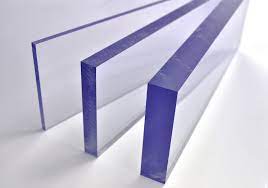POLICARBONATO ANTIABRASIÓN O ANTIRAYADO
El policarbonato es uno de nuestros materiales más resistentes a los impactos, y la combinación con un recubrimiento de alta dureza, lo convierte en un excelente material para el acristalamiento en numerosas aplicaciones.
Si bien es cierto que acostumbramos a definirlo como policarbonato antirayas o antirayado, en realidad, deberíamos nombrarlo como policarbonato antiabrasión. La diferencia fundamental entre policarbonato antiabrasión y policarbonato antirayado es que, el policarbonato antiabrasión puede resistir la rozadura de un estropajo de aluminio suave o los arañazos producidos por el uso común del material, mientras que un policarbonato antirayado, como bien dice su nombre no debería poder ser rayado en actos vandálicos con elementos afilados o punzantes, y por tanto el vidrio común tampoco podría ser considerado antirayado.
El policarbonato antiabrasión muestra una resistencia a los impactos muy superior a la de otros materiales como el cristal, convirtiéndolo en un material antivandálico apto para aplicaciones exigentes como escaparates, ventanas de vehículos, lucernarios y protecciones transparentes en general. Su resistencia a las rozaduras es mucho mayor a la del policarbonato estándar, gracias a su recubrimiento superficial endurecido, manteniendo una apariencia similar al vidrio y una alta resistencia a la rotura y a la abrasión.
En el siguiente vídeo podrán ver la diferencia entre un policarbonato estándar y un policarbonato antiabrasión.

